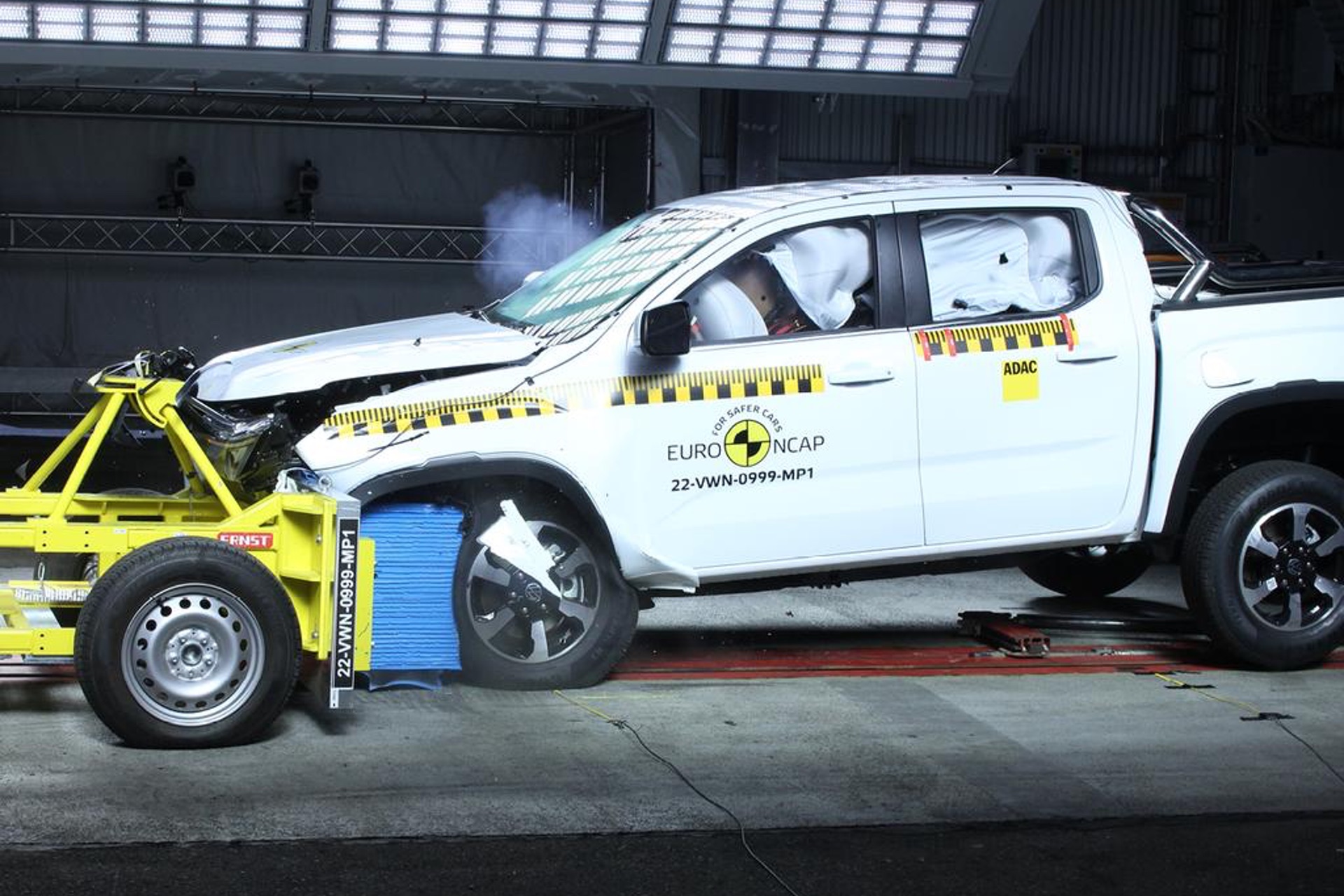ANCAP has awarded a five-star safety rating to the next generation Volkswagen Amarok, based on testing by sister organisation Euro NCAP. Assessed against 2020-2022 criteria, the rating is based on testing of the closely related Ford Ranger, combined with additional frontal offset (MPDB) and side impact tests conducted on the Amarok.
ADULT OCCUPANT PROTECTION
The passenger compartment of the Amarok remained stable in the MPDB test. Protection of the driver’s chest and lower legs were rated as adequate, and the passenger’s lower legs were rated marginal. Protection of all other critical body regions for the driver and the front passenger was good.
The front structure presented a high risk to occupants of an oncoming vehicle in the MPDB test (which evaluates vehicle-to-vehicle compatibility), and a 3.57-point penalty was applied.
In the full width frontal test, protection of the driver dummy was good for all critical body areas. Protection of the rear passenger neck was adequate, while protection of the chest of the rear passenger was rated marginal. Good protection was recorded for all other critical body areas.
In the side impact test, protection offered to all critical body regions of the driver was good. In the more severe oblique pole test, protection for the chest was marginal and pelvis was adequate.
The vehicle is equipped with a centre airbag to protect against occupant-to-occupant interaction in side impacts and it provided good protection for the head of both front seat occupants. Prevention of excursion (movement towards the other side of the vehicle) in the far side impact tests was assessed as good for the vehicle-to-vehicle impact scenario, and adequate in the vehicle-to-pole scenario.
A rescue sheet providing information to first responders in the event of a crash is available, and a multi-collision braking system is fitted.
CHILD OCCUPANT PROTECTION
In the frontal offset and side impact tests, protection of the 10-year and 6-year dummies was good, and the Volkswagen Amarok scored maximum points in both tests.
The Amarok is fitted with lower ISOFix anchorages and top tether anchorages on the rear outboard seats.
Installation of typical child restraints available in Australia showed all selected child restraints could be accommodated in each of the rear outboard seating positions and full points were scored for this assessment. The fitting of child restraints in the centre seating position of the second row is not recommended as there is no top tether anchorage.
VULNERABLE ROAD USER PROTECTION
The bonnet provided good or adequate protection to the head of a struck pedestrian over most of its surface, with some poor results recorded along the front of the bonnet and on the stiff windscreen pillars.
Protection of the pelvis was mixed, with areas of good and poor performance, while the bumper provided mostly adequate protection to pedestrians’ legs.
Amarok has an autonomous emergency braking (AEB) system that can function at highway speeds. It can detect and react to vulnerable road users, such as pedestrians and cyclists, and offered adequate performance in tests of its effectiveness in pedestrian test scenarios. The AEB system does not react to pedestrians in turning scenarios, and the AEB back-over system was not standard on the tested variant. Consequently, performance tests of these functions were not conducted.
Good performance was seen in cyclist test scenarios, with collisions avoided or mitigated in most scenarios. Overall, the system’s effectiveness for vulnerable road user protection was rated as good.
SAFETY ASSIST
As well as the AEB system, the Amarok features a lane support system (LSS) with lane keep assist and emergency lane keeping functionality.
Tests of the AEB (car-to-car) system showed a mix of adequate and good performance with collisions avoided or mitigated in most test scenarios, including AEB junction assist where the test vehicle can autonomously brake to avoid crashes when turning across the path of an oncoming vehicle.
Tests of LSS functionality showed good performance, including in the more critical emergency lane keeping test scenarios.
A speed assistance system is also standard, informing the driver of the local speed limit, and allowing speed to be manually set accordingly.
A seatbelt reminder system is fitted for all front and rear seating positions, but occupant detection is not available for rear seats.
A driver drowsiness monitor system is fitted as standard.

